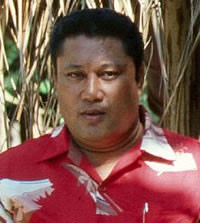The Samoan people are indigenous Polynesians whose culture and language have played a foundational role in the development of Eastern Polynesian societies. Samoa is considered one of the oldest Polynesian cultures, with oral traditions and genealogies tracing back thousands of years. European contact began in the 18th century, and Christian missionaries arrived in the 1830s, leading to widespread conversion. They live on the Pacific Islands of Samoa, American Samoa, and Fiji. Others have migrated to the United States, Australia, and New Zealand.
Samoan society is deeply communal, structured around extended families (aiga) and governed by a chiefly system (fa'amatai). Most Samoans live in villages and engage in subsistence agriculture, fishing, and small-scale commerce. Cultural values emphasize respect, hospitality, and communal responsibility. Traditional arts such as tattooing (tatau), dance (siva), and storytelling remain vibrant.
Christianity is central to Samoan identity. The dominant denomination is the Congregational Christian Church of Samoa, followed by Roman Catholics, Methodists, and Latter-Day Saints. Churches are prominent in every village, and Sunday worship is widely observed. Christianity has been integrated with traditional values, and many Samoans view their faith as inseparable from their cultural heritage.
Samoans need to find new ways to make a living that aren't limited by geography or resources.
Pray for strong Christians to disciple others among the Samoan youth.
Pray for unity and spiritual vitality among churches across denominations.
Pray that Samoan believers will be mobilized for missions within the Pacific and beyond.
Scripture Prayers for the Samoan in American Samoa.
AI generated by Copilot.
| Profile Source: Joshua Project |










